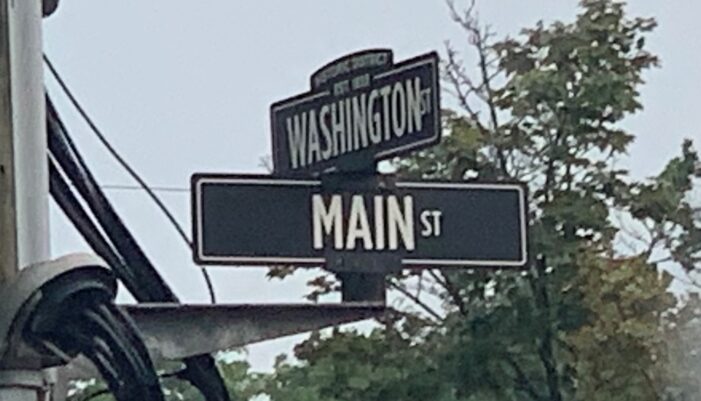BY ERIC HAVEN
Special to the Clarkston News
Have you noticed Clarkston’s new city limit and street name signs?
City officials have had the pleasure of hearing from many residents who kindly share their approval, including Bruce and Gayle Fuller who said, “How nice it is to now see clearly where all six entrances to Clarkston are” — North and South Main Street and White Lake Road, plus North Holcomb, Clarkston and Waldon Roads.
That was one of the city’s goals in getting the new signs, along with beautifying the community, but a greater story of Clarkston’s new signs is how they quietly tell the unique history, starting with the signs’ designer, John Pappas.
If his last name rings a bell, it’s because his father was Art Pappas, Clarkston’s beloved city manager for many years and after whom city hall is named.
A graphic designer and artist based in Chelsea, John grew up on West Washington Street. The sign committee quickly considered John a natural fit for the project, putting a little of himself and his family’s Clarkston history into the beautiful new signs.
The gateway signs also reach back to Clarkston’s mill village history with the hint of a mill waterwheel in the top corner between the vertical post and the horizontal cross arm.
When Michigan was still a territory, before becoming a state in 1837, much of the area north of Detroit was forest and swampland. Early pioneers, including Butler Holcomb, hacked their way through the dense undergrowth looking for water, especially where streams or rivers flowed over a precipice, creating a waterfall. At that point, they would build a mill with a waterwheel to power a large saw blade to transform trees into lumber to build homes, barns and other structures.
The village, like Lake Orion, Rochester, and many others, started with a mill, run by waterpower. Holcomb later sold the mill to the Clark Brothers who converted it for grinding grain. Farmers would unload their grain in the morning on Mill Street then pick up their flour and cornmeal in the evening.
Craig Breeden, president of ASI Michigan, a sign company in Troy, came up with the waterwheel detail that became the finishing touch. ASI was the project’s lowest bidder by a considerable amount, in part because Craig lives just outside the city and considers Clarkston his hometown.
Another distinction the sign committee made was to delineate Clarkston’s historic district, an important element to the village identity, with an arched notation — “Historic District, Est. 1832” — also noting when Clarkston was established.
In the mid-1970s, a dedicated group of residents led by Jennifer Radcliff and the late Ruth Basinger labored to protect some 200 intact historic structures in Clarkston at a time when MDOT looked to change Main Street from two lanes to four, which would have all-but destroyed the village. The diligent research required to get the Clarkston Historic District recognized as a national treasure worthy of preservation on the National Park Service’s National Register of Historic Places came to fruition in 1980.
Learn more at clarkstonhistory.org.
PHOTO: Clarkston’s new signs were installed this summer, including this one at the corner of Main Street and Washington Street in the downtown district. Photo by Matt Mackinder

